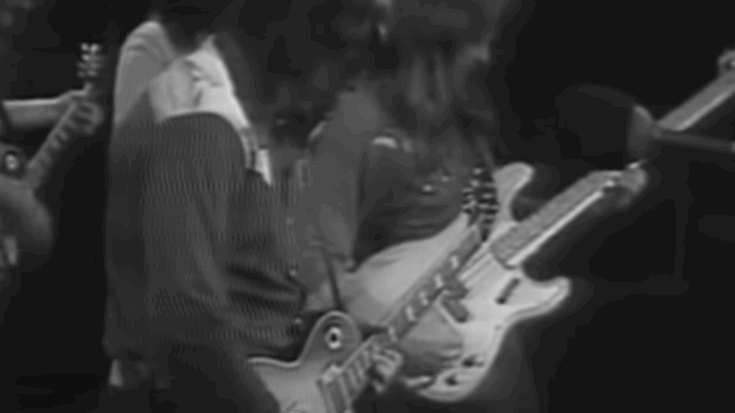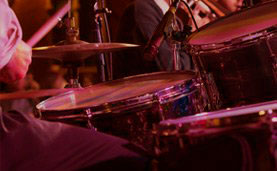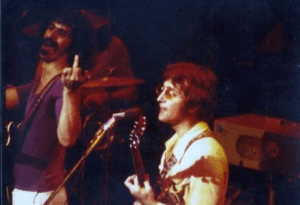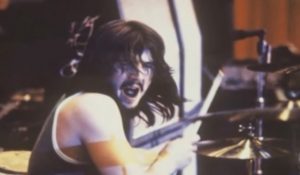‘70s Incredible Guitar Solos That Didn’t Come From Page, May, or Gilmour

via Marshall Tucker on MV / YouTube
The 1970s marked a turning point in how guitar solos were perceived—not just as technical showcases, but as narrative moments within songs. Solos became emotional interludes, guiding listeners through shifts in tone and mood the way a camera pans or a page turns in a story. It was a decade where the guitar truly learned to speak, scream, and weep all on its own.
While household names dominated the conversation, the decade’s creative depth stretched far beyond the expected legends. Beneath the towering shadows of stadium-filling icons were artists whose solos carried equal fire, emotion, and inventiveness, even if they didn’t always make the covers of rock magazines. Their playing revealed the boundless experimentation that made the ‘70s such an electric era for rock.
This list shines a light on those overlooked moments—the solos that didn’t come from Page, May, or Gilmour, but still burned their way into music history. Each one stands as proof that brilliance wasn’t confined to the usual suspects; it could be found in the cracks, the deep cuts, and the unexpected corners of the decade’s soundscape.
“Blue Sky” by The Allman Brothers Band
Few guitarists embodied grace and emotion quite like Duane Allman, and his solo on The Allman Brothers Band’s “Blue Sky” stands as a quiet masterclass in restraint and soul. Released in 1972, the song radiates warmth and optimism, and Allman’s touch captures that essence with uncanny precision. His phrasing glides effortlessly between melody and movement, echoing the natural ebb and flow of a Southern summer afternoon.
What makes this solo remarkable is its sense of humility. Allman doesn’t aim to dominate the track or prove a technical point; instead, he molds his playing to complement the song’s breezy, pastoral tone. Every note feels intentional, not because it’s flashy, but because it belongs exactly where it is. There’s a kind of quiet confidence in how he plays—an understanding that the best solos serve the story, not the ego.
It’s this sense of balance that elevates “Blue Sky” beyond a typical 1970s rock track. Allman’s guitar solo feels like a conversation—between melody and harmony, between technique and feeling. In a decade full of guitarists eager to be heard, Duane Allman reminded everyone that sometimes, it’s the ones who listen best who play the most beautifully.
“Can’t You See” by The Marshall Tucker Band
The Marshall Tucker Band may not have enjoyed the same fame as some of their contemporaries, but their music carried an authenticity that few could rival. “Can’t You See” captures that spirit perfectly, and Toy Caldwell’s guitar solo gives it an emotional edge that lingers long after the final note. It’s not an attention-grabbing performance—it’s the kind that seeps into you slowly, carried by feel rather than flash.
Caldwell’s playing thrives on understatement. He doesn’t demand your admiration or twist the guitar into acrobatics; instead, his tone and timing create something that feels lived-in, familiar, and profoundly human. The solo fits seamlessly into the song’s sorrowful storytelling, acting less like a detour and more like a deep breath—a moment to reflect before the lyrics draw you back in.
In a decade where guitar solos often served as declarations of power, Caldwell’s performance on “Can’t You See” offers something more grounded. It’s a reminder that the guitar’s greatest strength lies not in its volume or complexity, but in its ability to make emotion tangible. His solo isn’t loud—it’s lasting.
“Reelin’ In The Years” by Steely Dan
“Reelin’ In The Years” might be one of Steely Dan’s most recognizable songs, but Elliott Randall’s guitar solo often doesn’t get the credit it deserves. From the first bend to the final note, Randall’s performance brims with clarity and personality, giving the song its unforgettable spark. His solo doesn’t just punctuate the track—it defines it, turning an already sharp pop-rock composition into something iconic.
What sets Randall’s work apart is his ability to merge precision with spontaneity. Every lick feels effortless yet deliberate, capturing the playful sarcasm and sophistication that Steely Dan built their reputation on. Rather than overpowering the song, he threads his phrases through the arrangement, making his guitar a natural extension of the track’s rhythm and wit.
The result is a solo that feels both spontaneous and immaculately composed—a paradox that only a handful of players could pull off. “Reelin’ In The Years” remains a testament to Elliott Randall’s touch: fluid, inventive, and impossible to forget once you’ve heard it. In a decade filled with legends, his work proves that sometimes, the most enduring solos come from the players who let the song do most of the talking.














